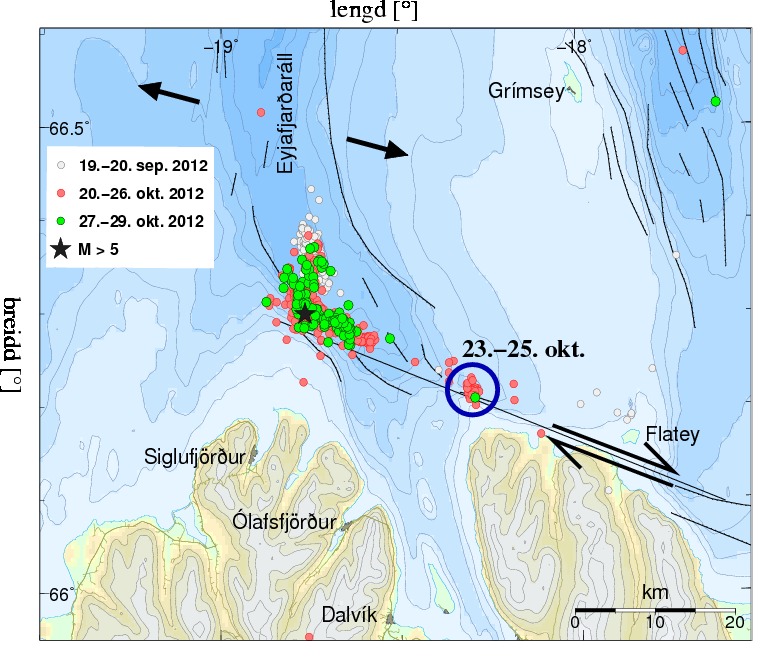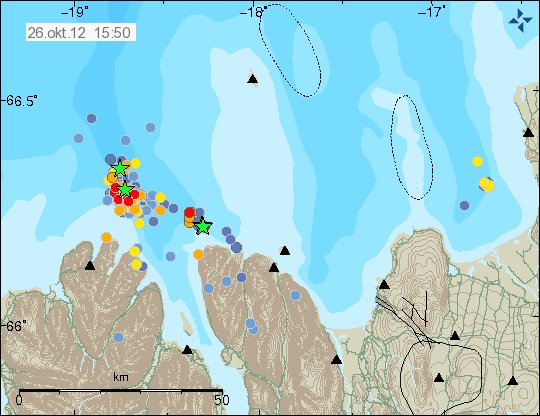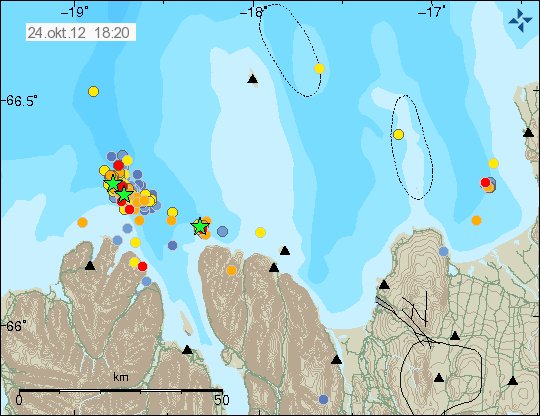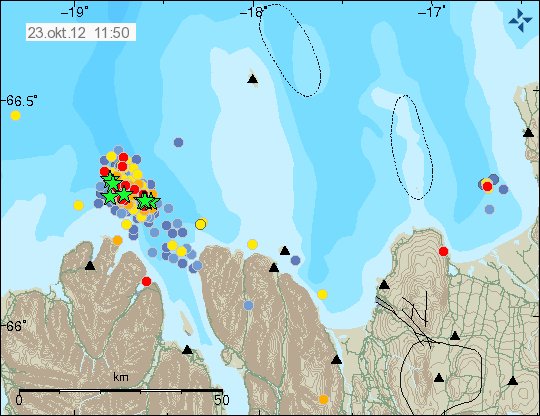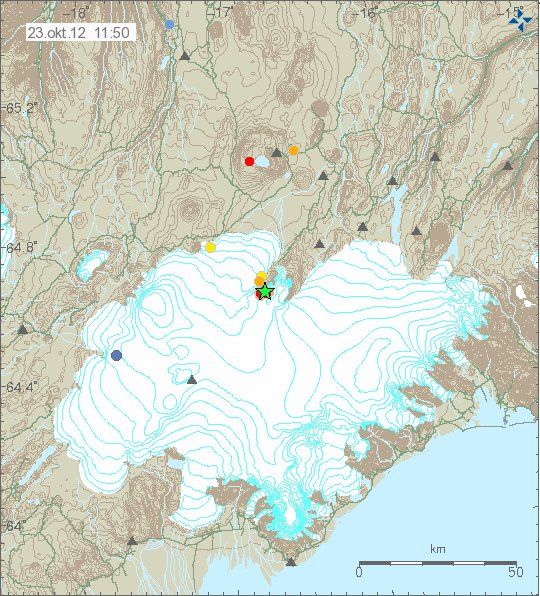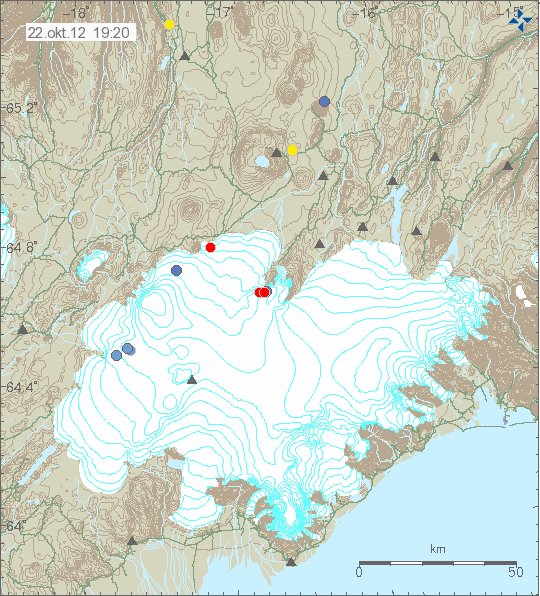Earthquake activity has renewed at TFZ. The area that is activate is the same area that had earthquake swarm from about 1 month ago. But largest earthquake in that swarm was a Mb5.6 earthquake. The largest earthquake today was a magnitude ML3.3 earthquake at 12:12 UTC. A magnitude 2.8 earthquake did take place at 13:08 UTC.
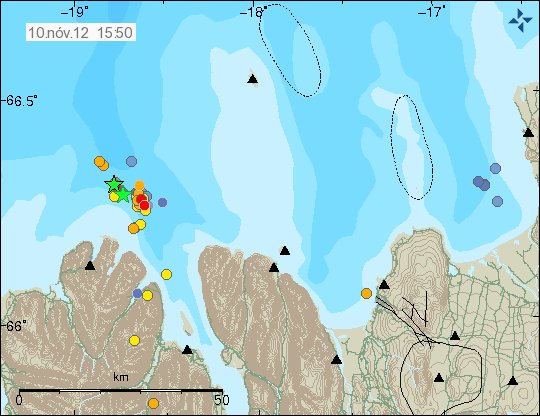
Current earthquake activity in TFZ. Green star mark the magnitude magnitude ML3.3 earthquake. Copyright of this image belongs to Iceland Meteorological Office.
The risk of large earthquake in this area still high. When it might happen is impossible to know for sure. There have been reports of the largest earthquake being felt in the town of Siglufjörður and other nearby areas. I fully expect earthquake activity to continue in this area. There have been stormy conditions in Iceland for the past 24 hours. This winter storm is making it more difficult to detect smaller earthquakes in this area, as in other areas of Iceland.
This earthquake activity appears clearly on my geophone in Hvammstangi. Even if there is a lot of wind noise taking place.






